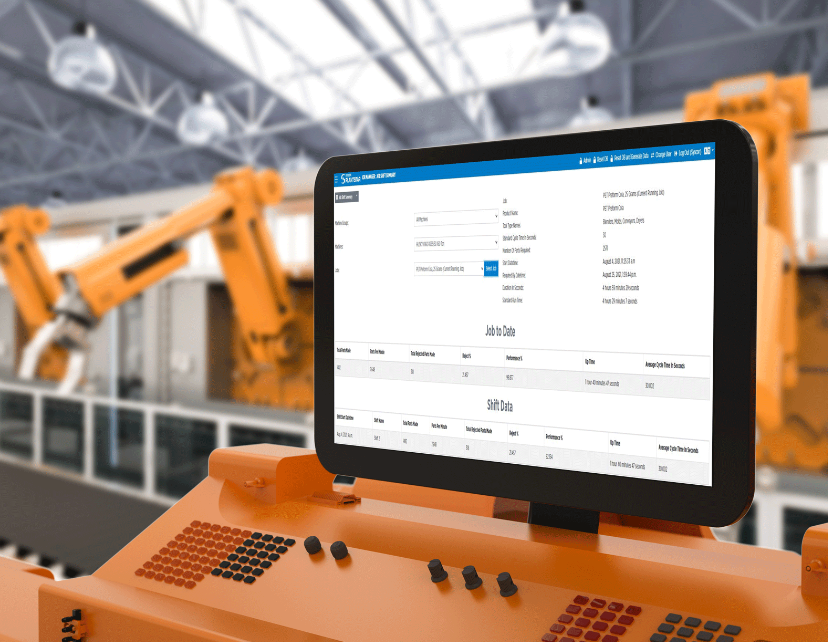
Manufacturing is an intensely competitive business, one where suppliers constantly search for a competitive edge. One way is putting metrics in place to track throughput time. With it, vendors lessen downtime, lower costs, and improve profitability.
Throughput time, also known as production rate, is the amount of product that a company creates and delivers to clients within a specific period of time. The starting point begins as raw materials are collected and includes their assembly, shipment, manufacturing, sales, distribution, and final product delivery.
Why Should an Enterprise Care about its Throughput Time?
Throughput time is one of many possible areas that provide suppliers with an opportunity to distinguish themselves. Manufacturers with high throughput levels can deliver more for less and take market share away from their foes.
Visibility is key to a manufacturer’s ability to improve its throughput time. Typically, vendors manage throughput time reactively, collecting information at various stages of the process and analyzing it after the fact. Recent technical advances, like cloud, IoT, data analytics, and artificial intelligence and machine learning, enable them to generate more information than ever before.
The Role of MES
However, generating information is only a step in the process. Companies need to consolidate it. PlantStar is a Manufacturing Execution Systems (MES) solution that collects Production and Process data from manufacturing, quality control, management, accounting, and financial systems.
The MES solution provides floor personnel and management with key information about the manufacturing process as well as their Overall Equipment Efficiency (OEE). The robust MES streamlines manufacturing processes holistically and supports a variety of features:
- Operator Tracking
- Labeling and Barcoding
- ERP Integration
- Remote Monitoring
- Real-Time Data
Increasingly sophisticated data analysis tools make it easier for suppliers to correlate data and identify trends, like how quickly materials move through the supply chain. Throughput tracking illustrates the performance of each asset in real-time, so managers make informed data-driven decisions when evaluating the individual components used in the production cycle. They no longer guess where problem spots may be; they know. The data is easily accessible, often on mobile devices; presented in an intuitive, easy-to-read interface that features powerful graphical representations. With it, they dig deeper and find the correlations needed to identify the root cause of any problem and reduce processing times.
Lower Downtime
Downtime, especially unplanned downtime, is something that manufacturers would like to avoid completely. The most obvious cause is that machines break down, usually unexpectedly. With machine downtime, production lines stop, workflow is slowed, contingency plans are enacted, and vendors waste time and lose money. In fact, equipment failures are responsible for 42 percent of all plant floor downtime and cost U.S. manufacturers $50 billion annually in lost revenue. Whether planned or unplanned, downtime’s impact on the business is significant. In fact, it costs manufacturers up to $260,000 per hour, according to Aberdeen Research.
So, managers want to limit downtime as much as possible. The process starts with better access to supply chain, manufacturing, and distribution information. Throughput tracking reduces downtime by keeping even the most bare-bones team informed with actionable data and pattern recognition using real-time machine data collection and deeper downtime/scrap reporting.
Reduce Costs
Cutting costs is typically one of the more obvious benefits of incorporating an MES and throughput tracking into your business. The cost-saving areas arise from equipment savings, like eliminating overlaps in production, inventory, lowering down cycles, and decreasing tool and material setup times.
Manufacturers also better understand how well they are using their human resources at any given time. A misallocation can significantly hinder production, resulting in longer runs, higher personnel expenses, and poor production efficiency. With real-time information, they create schedules that match personnel to company needs and adjust as needed on the fly.
Improve Customer Satisfaction
The more a manufacturer knows about its throughput time, the more it can share its knowledge with its customers. If a product has run into a production run snafu, the client can be notified, and the two can work on alternative plans if that is necessary. Throughput monitoring also illustrates how well the company is meeting its quality objectives and identifies possible areas of improvement.
Another plus is businesses improve their ability to meet shipment expectations. One of the biggest customer frustrations is experiencing long wait times after ordering their goods. Analyzing throughput time reveals areas of the operation that can be trimmed, reducing the time it takes to make and distribute products and building a stronger long-term relationship with customers.
Increased Profitability
Closely monitoring throughput time enables a company to get a better understanding of its complete manufacturing and supply chain processes. By reducing throughput time, manufacturers make a greater quantity of products in a smaller period of time and do it more efficiently. As a result, production costs drop, and margins rise.
Suppliers are under intense pressure to improve their competitive position. Tracking throughput time enables them to gain more visibility into the manufacturing process, so they make needed adjustments, improve the business, and create a thriving enterprise.




